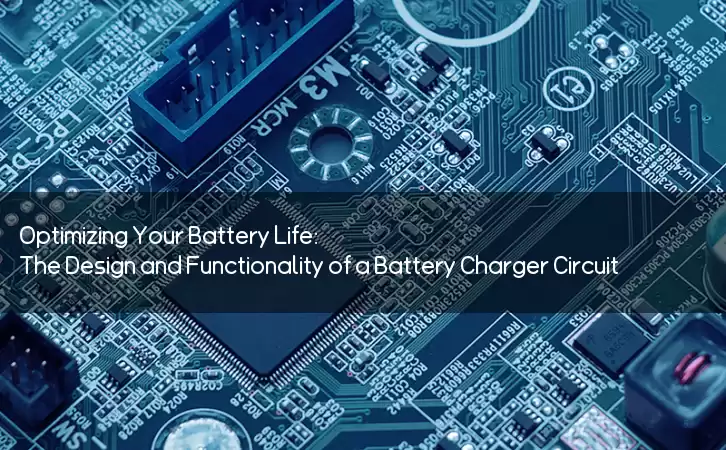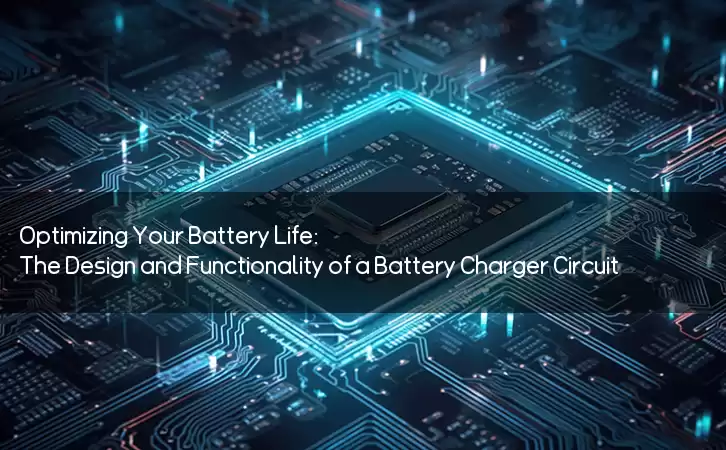Information Center
Optimizing Your Battery Life: The Design and Functionality of a Battery Charger Circuit
Published:2023-07-15 00:33:51 Author:Green WCND Views:38Battery Charger Circuit: Design and Functionality

A battery charger circuit is a crucial part of battery-powered devices. It is responsible for recharging the battery when it runs out of energy. A good battery charger circuit should be efficient, reliable, and safe. In this article, we will discuss the design and functionality of a typical battery charger circuit.

Design of Battery Charger Circuit

The design of a battery charger circuit depends on the type of battery, its capacity, and the charging requirements. The charger circuit for a lead-acid battery is different from that of a lithium-ion battery. The following are the essential components of a battery charger circuit:
1. Power Supply: The power supply is the source of energy that charges the battery. It could be AC or DC input, depending on the type of battery and the charging voltage. A transformer and rectifier circuit convert the AC input to a DC output for charging.
2. Control Circuit: The control circuit is responsible for regulating the charging current and voltage. The control circuit prevents the battery from overcharging, which could damage the battery.
3. Battery Protection Circuit: The battery protection circuit monitors the battery voltage and temperature and protects the battery from overcharging, over-discharging, and short circuits.
4. Display Circuit: The display circuit displays the charging status of the battery. It could be a simple LED indicator or an LCD screen that shows the charging current, voltage, and time.
Functionality of Battery Charger Circuit
The functionality of a battery charger circuit depends on the type of battery and the charging requirements. There are different charging methods, such as constant current, constant voltage, and pulse charging. The following are the common functionality of a battery charger circuit:
1. Charging Current Regulation: The charging current should be set according to the battery’s capacity and the charging method. If the charging current is too high, it could damage the battery. If the charging current is too low, it could prolong the charging time.
2. Charging Voltage Regulation: The charging voltage should be set according to the battery’s chemistry and the charging method. If the charging voltage is too high, it could cause the battery to overheat and explode. If the charging voltage is too low, it could result in undercharging.
3. Battery Monitoring: The battery charger circuit should continuously monitor the battery voltage and temperature to prevent overcharging, over-discharging, and short circuits. The control circuit adjusts the charging current and voltage accordingly to ensure safe and efficient charging.
4. Charging Time Calculation: The battery charger circuit should calculate the charging time based on the battery capacity and the charging current. The display circuit shows the remaining charging time and the charging status.
Conclusion
In conclusion, a battery charger circuit is a critical part of battery-powered devices. It ensures that the battery is always ready for use by efficiently and safely recharging it. The design and functionality of the battery charger circuit depend on the type of battery and the charging requirements. A well-designed battery charger circuit is essential for the optimal performance and longevity of the battery.
IntroductionGolf carts serve as vital transportation tools on golf courses, and their performance and reliability are crucial for enhancing player experience an···
The battery pack is the heart of a golf cart, silently powering every acceleration and climb on the green. However, battery degradation often goes unnoticed, mu···
The battery pack is the heart of a golf cart’s power system, yet maintaining it has long been a challenge for technicians. Traditional troubleshooting methods—···
For golf course managers, ensuring smooth and efficient operations is crucial for providing a memorable experience for golfers and maintaining the reputation of···





